Time Travel
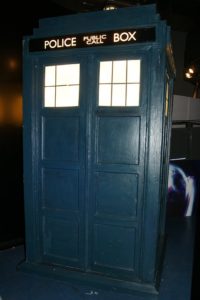
Time travels features extensively in fiction, but there is some theoretical basis to the idea
Arguably, we are always travelling though time, as we move from the past into the future. But time travel usually refers to the possibility of changing the rate at which we travel into the future, or completely reversing it so that we travel into the past. Although a plot device in fiction since the 19 th Century (see the section on Time in Literature), time travel has never been practically demonstrated or verified, and may still be impossible.
Time travel is not possible in Newtonian absolute time (we move deterministically and linearly forward into the future). Neither is it possible according to special relativity (we are constrained by our light cones). But general relativity does raises the prospect (at least theoretically) of travel through time, i.e. the possibility of movement backwards and/or forwards in time, independently of the normal flow of time we observe on Earth, in much the same way as we can move between different points in space.
Time travel is usually taken to mean that a person’s mind and body remain unchanged, with their memories intact, while their location in time is changed. If the traveller’s body and mind reverted its condition at the destination time, then no time travel would be perceptible.
Time Travel Scenarios
Although, in the main, differing fundamentally from the H.G. Wells concept of a physical machine with levers and dials, many different speculative time travel solutions and scenarios have been put forward over the years. However, the actual physical plausibility of these solutions in the real world remains uncertain.
At its simplest, as we have seen in the section on Relativistic Time, if one were to travel from the Earth at relativistic speeds and then return, then more time would have passed on Earth than for the traveller, so the traveller would, from his perspective, effectively have “travelled into the future”. This is not to say that the traveller suddenly jumped into the Earth’s future, in the way that time travel is often envisioned, but that, as judged by the Earth’s external time, the traveller has experienced less passage of time than his twin who remained on Earth. This is not real time travel, though, but more in the nature of “fast-forwarding” through time: it is a one-way journey forwards with no way back.
There does, however, appear to be some scientific basis within the Theory of Relativity for the possibility of real time travel in certain scenarios. Kurt Gödel showed, back in the early days of relativity, that there are some solutions to the field equations of general relativity that describe space-times so warped that they contain “closed time-like curves”, where an individual time-cone twists and closes in on itself, allowing a path from the present to the distant future or the past. Gödel’s solution was the first challenge in centuries to the dominant idea of linear time on which most of physics rests. Although a special case solution, based on an infinite, rotating universe (not the finite, non-rotating universe we actually find ourselves in), other time travel solution have been identified since then that do not require an infinite, rotating universe, but they remain contentious.
In the 1970s, controversial physicist Frank Tipler published his ideas for a “time machine”, using an infinitely long cylinder which spins along its longitudinal axis, which he claimed would allow time travel both forwards and backwards in time without violating the laws of physics, although Stephen Hawking later disproved Tipler’s ideas.
In 1994, Miguel Alcubierre proposed a hypothetical system whereby a spacecraft would contract space in front of it and expand space behind it, resulting in effective faster-than-light travel and therefore (potentially) time travel, but again the practicalities of constructing this kind of a “warp drive” remain prohibitive.
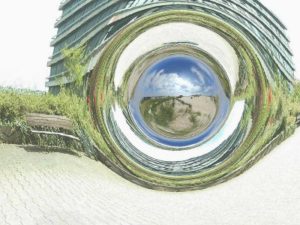
A worm hole is a feature of space-time that could theoretically provide a short-cut through time and space
Other theoretical physicists like Kip Thorne and Paul Davies have shown how a wormhole in space-time could theoretically provide an instantaneous gateway to different time periods, in much the same way as general relativity allows the theoretical possibility of instantaneous spatial travel through wormholes. Wormholes are tubes or conduits or short-cuts through space-time, where space-time is so warped that it bends back on itself, another science fiction concept made potential reality by the Theory of Relativity. The drawback is that unimaginable amounts of energy would be required to bring about such a wormhole, although experiments looking into the possibility of creating mini-wormholes and mini-black holes are being carried out at the particle accelerator at CERN in Switzerland. It also seems likely that such a wormhole would collapse instantly into a black hole unless some method of holding it open were devised (possibly so-called “negative energy”, which is known to be theoretically possible, but which is not yet practically feasible). Stephen Hawking has suggested that radiation feedback, analogous to feedback in sound, would destroy the wormhole, which would therefore not last long enough to be used as a time machine. Actually controlling where (and when) a wormhole exits is another pitfall.
Another potential time travel possibility, although admittedly something of a long shot, relates to cosmic strings (or quantum strings), long shreds of energy left over after the Big Bang, thinner than an atom but incredibly dense, that weave through the entire universe. Richard Gott has suggested that if two such cosmic strings were to pass close to each other, or even close to a black hole, the resulting warpage of space-time could well be so severe as to create a closed-time-like curve. However, cosmic strings remain speculative and the chances of finding such a phenomenon are vanishingly small (and, even if it were possible, such a loop may well find itself trapped inside a rotating black hole).
Physicist Ron Mallet has been looking into the possibility of using lasers to control extreme levels of gravity, which could then potentially be used to control time. According to Mallet, circulating beams of laser-controlled light could create similar conditions to a rotating black hole, with its frame-dragging and potential time travel properties.
Others are looking to quantum mechanics for a solution to time travel. In quantum physics, proven concepts such as superposition and entanglement effectively mean that a particle can be in two (or more) places at once. One interpretation of this (see the section on Quantum Time) is the “many worlds” view in which all the different quantum states exist simultaneously in multiple parallel universes within an overall multiverse. If we could gain access to these alternative parallel universes, a form of time travel might then be possible.
At the sub-sub-microscopic level – at the level of so-called quantum foam, tiny bubbles of matter a billion-trillion-trillionths of a centimetre in length, perpetually popping into and out of existence – it is speculated that tiny tunnels or short-cuts through space-time are constantly forming, disappearing and reforming. Some scientists believe that it may be possible to capture such a quantum tunnel and enlarge it many trillions of times to the human scale. However, the idea is still at a very speculative stage,
It should be noted that, with all of these schemes and ideas, it does not look to be possible to travel any further back in time that the time at which the travel technology was devised.
Faster-Than-Light Particles
The equations of relativity imply that faster-than-light (superluminal) particles, if they existed, would theoretically travel backwards in time. Therefore, they could, again theoretically, be used to build a kind of “antitelephone” to send signals faster than light, and thus communicate backwards in time. Although the Theory of Relativity disallows particles from accelerating from sub-light speed to the speed of light (among other effects, time would slow right down and effectively stop for such a particle, and its mass would increase to infinity), it does not preclude the possibility of particles that ALWAYS travel faster than light. Therefore, the possibility does still exist in theory for faster-than-light travel in the case of a particle with such properties.
There is a rather strange theoretical particle in physics called the tachyon that routinely travels faster than light, with the corollary that such a particle would naturally travel backwards in time as we know it. So, in theory, one could never see such a particle approaching, only leaving, and the particle could even violate the normal order of cause and effect. For a tachyon, the speed of light is the lower speed limit, while the upper speed limit is infinity, and its speed increases as its energy decreases. Even stranger, the mass of a tachyon would technically be an imaginary number (i.e. the number squared is negative), whatever that might actually mean in practice.
It should be stressed that there is no experimental evidence to suggests that tachyons actually exist, and many physicists deny even the possibility. A tachyon has never been observed or recorded (although the search continues, particularly through analysis of cosmic rays and in particle accelerators), and neither has one ever been created, so they remain hypothetical, although theory strongly supports their existence.
Research using MINOS and OPERA detectors has suggested that tiny particles called neutrinos may travel faster than light. Other more recent research from CERN, however, has put the findings into dispute, and the matter remains inconclusive. Neutrinos are not merely hypothetical particles like tachyons, but a well-known part of modern particle physics. But they are tiny, almost-massless, invisible, electrically neutral, weakly-interacting particles that pass right through normal matter, and consequently are very difficult to measure and deal with (even their mass has never been measured accurately).
Time Travel Paradoxes
The possibility of travel backwards in time is generally considered by scientists to be much more unlikely than travel into the future. The idea of time travel to the past is rife with problems, not least the possibility of temporal paradoxes resulting from the violation of causality (i.e. the possibility that an effect could somehow precede its cause). This is most famously exemplified by the grandfather paradox: if a hypothetical time traveller goes back in time and kills his grandfather, the time traveller himself would never be born when he was meant to be; if he is never born, though, he is unable to travel through time and kill his grandfather, which means that he WOULD be born; etc, etc.
Some have sought to justify the possibility of time travel to the past by the very fact that such paradoxes never actually arise in practice. For example, the simple fact that the time traveller DOES exist at the start of his journey is itself proof that he could not kill his grandfather or change the past in any way, either because free will ceases to exist in the past, or because the outcomes of such
decisions are predetermined. Or, alternatively, it is argued, any changes made by a hypothetical future time traveller must already have happened in the traveller’s past, resulting in the same reality that the traveller moves from.
Theoretical physicist Stephen Hawking has suggested that the fundamental laws of nature themselves – particularly the idea that causes always precede effects – may prevent time travel in some way. The apparent absence of “tourists from the future” here in our present is another argument, albeit not a rigorous one, that has been put forward against the possibility of time travel, even in a technologically advanced future (the assumption here is that future civilizations, millions of years more technologically advanced than us, should be capable of travel).
Some interpretations of time travel, though, have tried to resolve such potential paradoxes by accepting the possibility of travel between “branch points”, parallel realities or parallel universes, so that any new events caused by a time traveller’s visit to the past take place in a different reality and so do not impact on the original time stream. The idea of parallel universes, first put forward by Hugh Everett III in his “many worlds” interpretation of quantum theory in the 1950s, is now quite mainstream and accepted by many (although by no means all) physicists.
Visiting Jamestown Settlement – All You Should Know Before You Go
Visiting Jamestown Settlement is as much of an adventure today as it was 400 years ago, when the European settlers established here the first permanent British colony in North America. Together with Historic Jamestowne, Jamestown Settlement is a living history museum that tells about the lives of the first colonists, as well as the Indigenous peoples who lived in this region before the British arrived.
Jamestown Settlement is an interesting weekend getaway if you are in Virginia. The Settlement is part of the Historic Triangle, a group of three colonial communities that also includes Colonial Williamsburg and Yorktown.
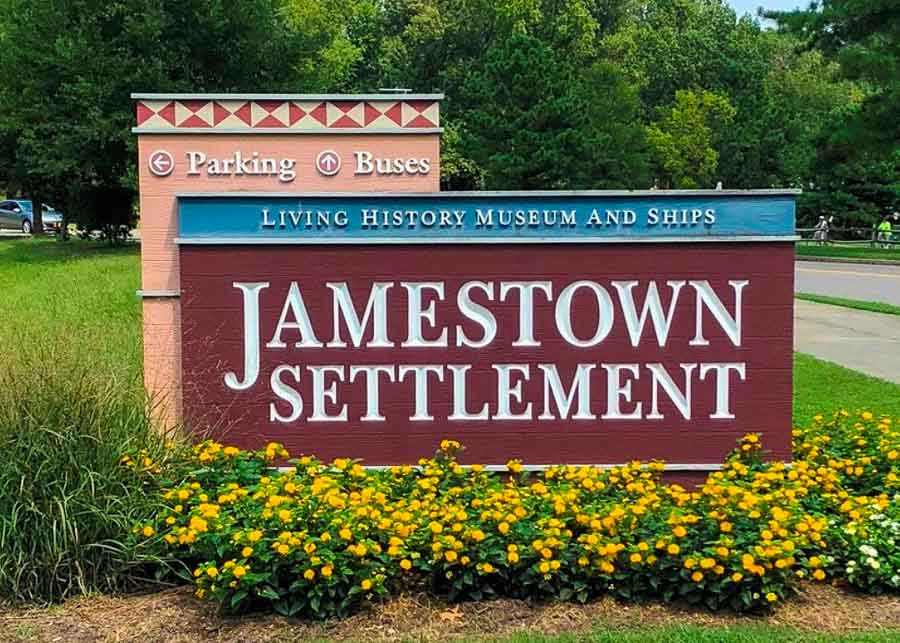
A Brief History of Jamestown – the First British Colony in North America
In 1607 three ships from England (Susan Constant, Godspeed, and Discovery) carrying around 100 men, landed in the Virginia Peninsula. The settlers picked a site and named it Jamestown after their king, James I. Soon after they came ashore they started building a fort to protect themselves against the local Indians.
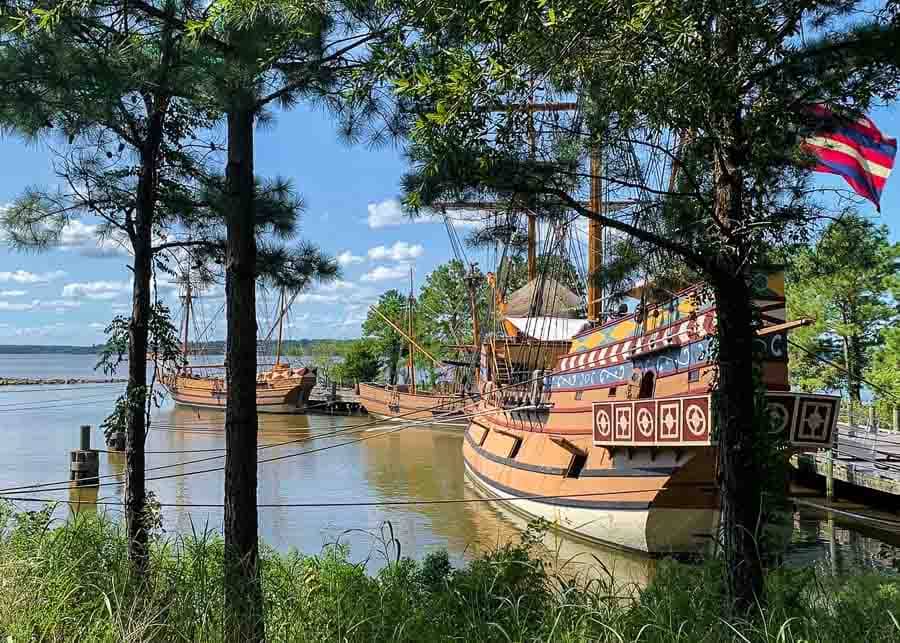
Half of the Jamestown settlers were craftsmen, soldiers, and laborers. Among them there was a tailor, a barber, and two surgeons. The other half were wealthy men who probably underestimated how difficult it would be to survive in the New World.
Despite their efforts to adapt to the harsh conditions, the settlers found themselves unable to cope with their new situation. The food they transported from England had spoiled, the water was unfit to drink, and soon after they settled in half of the colony population perished from disease.
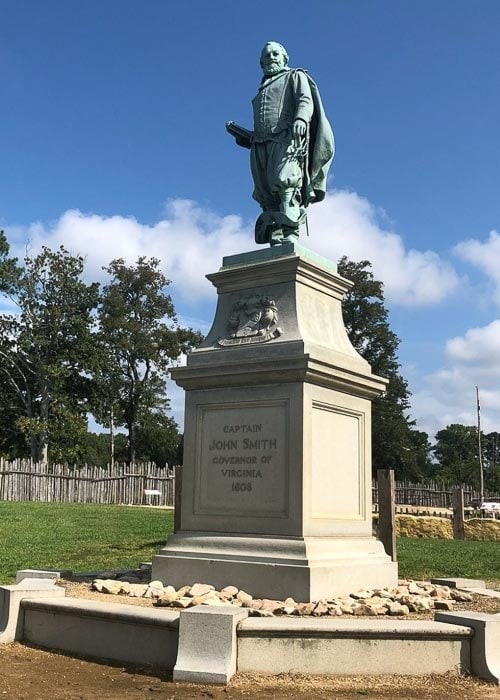
Among the survivors was Captain John Smith, an adventurer and explorer who became one of the leaders of the colony. Despite the hardships, he kept the colony going by establishing a trade with the Indian tribe Powhatan.
But peace didn’t last very long and soon Captain Smith was captured by the Indians. They eventually released him at the intervention of Pocahontas, the Indian’s chief’s daughter, who pleaded with her father for the Captain’s life. Pocahontas later married a tobacco planter and eventually moved to England.
Visiting Jamestown Settlement vs. Historic Jamestowne
Jamestown Settlement is the more visual and interactive part of your visit, documenting the beginnings of the first British colony in America. Here you’ll see replicas of the three ships that arrived from England in 1607, as well as a replica of the fort and a Native Indian Village.
Historic Jamestowne on the other hand, is the actual site of the first British colony from 1607. Here is where you’ll walk into the footsteps of Pocahontas and Captain Smith and see the actual remains of James Fort. Also, here you’ll view the archeological site where thousands of artifacts from the first colony have been discovered.
What to Look For When Visiting Jamestown Settlement
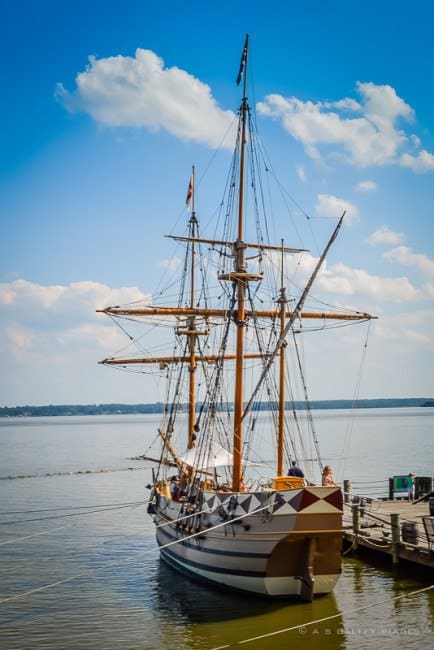
Jamestown Settlement features a few interesting sites, among which the re-creation of the three ships that brought the English colonists to Virginia in 1607.
You can explore the ships and find out about their four-and-a-half months voyage from England. There are also demonstrations of the 17th century navigation.
Stepping aboard these ships is a very interesting experience. It’s chilling to see the miserable conditions these sailors endured below the decks. It was cold, damp and dark. You can only imagine the smell of the unwashed bodies, the snores , the coughs. Not a good place to be for 135 days!
You can also visit the replica of James Fort on the site. It’s very interesting to see how the settlers lived in the first half of the 17th century. The dwellings and the artifacts will give you an insight into the life of Jamestown during the first half of the 17th century.
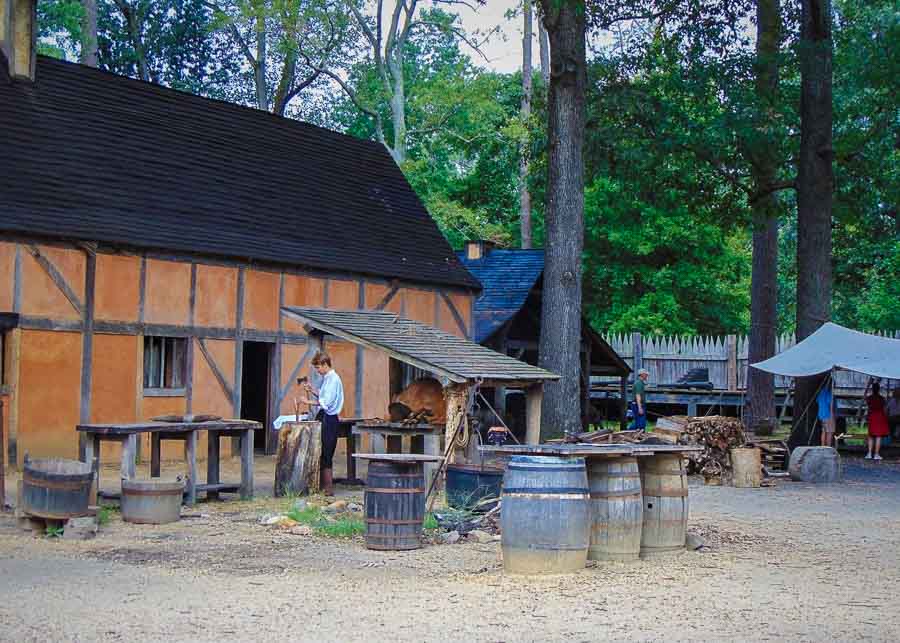
Another interesting site to visit in the Jamestown Settlement is the Powhatan Indian Village. The village was designed based on archeological discoveries at an Indian site very close to Jamestown.
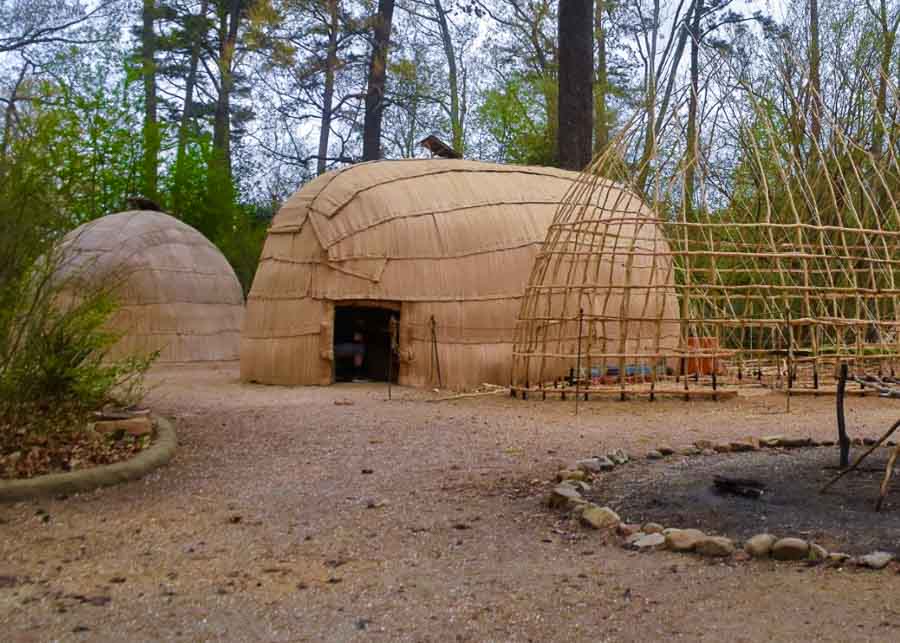
Before starting your visit, I suggest watching the introductory film that trace Jamestown Settlement’s beginnings and the first century of the Virginia colony. The movie also describes the Powhatan Indian, English and west central African cultures that merged in early Virginia.
What to Look For WhenVisiting Historic Jamestowne
In the Historic Jamestowne you’ll be taking a walking tour with a park ranger or an archeologist who will show you the remains of the fort as well as the archeological site.
The original fort had a triangular shape with circular watch towers. The construction was very basic, using indigenous trees stripped of branches and bark. Today’s replica reveals just a small part of the original structure.
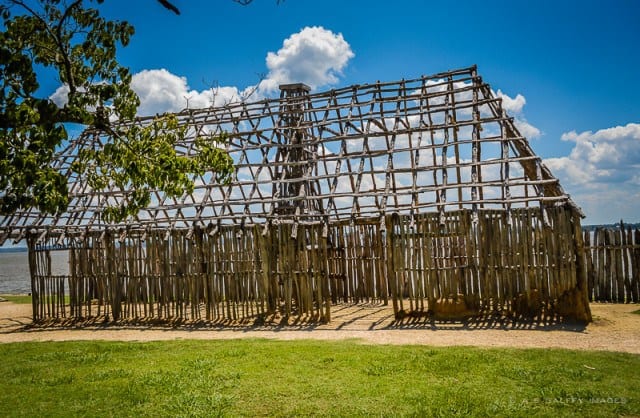
Next to the fort you’ll see a bronze statue of Captain John Smith, one of the first settlers of Jamestown.

At the archeological site you’ll see carcasses of dogs, cats and horses presumed to have been consumed by the settlers during the “starving time.” Even more, in recent years some human bones have been discovered that seem to tell a far more gruesome story: the cannibalization of a 14-year-old English girl.

The archeological site also reveals remnants of the original Church at Jamestown, where Pocahontas was married.

The present day church (known as the Pocahontas Wedding Chapel) is a replica built in 1906 on the foundation of the original chapel. This is actually the fifth reconstruction, as the previous churches have either perished in the fire, or fell into ruin.
There is also an archeological museum at the Visitor Center that you can visit and a Glasshouse, where costumed glassblowers demonstrate Jamestown’s first industry.
Practical Information for Visiting Jamestown Settlement
Jamestown Settlement is located at 2110 Jamestown Road, in Williamsburg, VA 23185.
The site is open year-round from 9 a.m. to 5 p.m. daily, except Christmas Day and New Year’s Day. Outdoor living-history areas open at 10 a.m. to 4:30 p.m.
The information below has been updated in 2020 to reflect the latest prices.
Admission Fees and Parking
Tickets for Jamestown Settlement are good for 7 consecutive days and include admission to Yorktown Battlefield. The cost is $27.50 for adults, and $13.50 for children 6-12 years old. You can buy your combo ticket here.
You can also buy a Historic-Triangle Pass for $99.99 (adults) or $46.00 (children 6-15). The pass grants you access to all three sites (Colonial Williamsburg, Jamestown Settlement, and Yorktown Battlefield) for seven consecutive days.
Parking for Jamestown Settlement is free.
Time Needed on the Site: You can visit both Jamestown Settlement and Historic Jamestowne in half a day. I suggest combining your visit with the next door Yorktown Battlefield, which is included in your ticket.
Where to Eat in Jamestown Settlement
Jamestown is a very small place with very few choices for food. We had lunch at Jamestown Settlement Café where they serve some sandwiches, soups and pizza, but the food is mediocre.
However, if you are not quite starving after visiting Jamestown Settlement, I’d suggest going back to Williamsburg where the food choices are far more numerous and much better. The driving is only 12-15 minutes.
YOU MAY ALSO BE INTERESTED IN THESE ARTICLES:
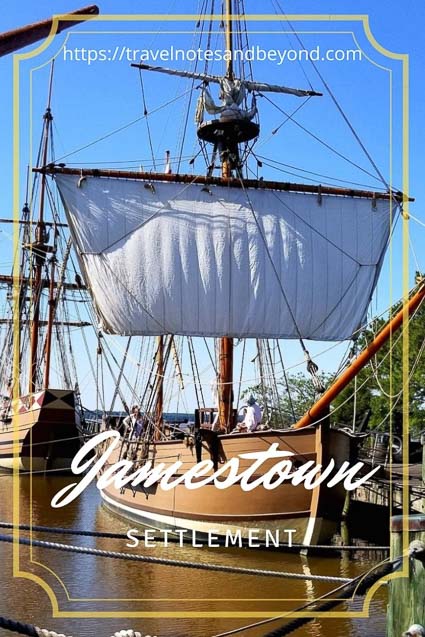
About Anda
Anda is an award winning travel writer, avid globetrotter and passionate photographer. She is the voice behind “Travel Notes & Beyond,” a collection of stories and travel impressions from her wanderings around the world. When she is not busy writing, traveling, or editing photographs, you can find her hiking in the foothills behind her house together with her husband and their dog.
Reader Interactions
Comments
Wow 400 years of history! Now, this is something that I love and would want to visit straight away. The Jamestown Settlement looks like a great place to dig into the past. I love reading about the history even if it is sad sometimes like the cannibalisation. But thanks for introducing me to this place.
Indeed a great place to dig into America’s history, Raksha!
Very interesting and historical place. These kind of places are usually on our travel map when we go somewhere. We have not been to Virginia yet, but hopefully we get to visit soon. I’m surprised they haven’t added Jamestown to National Park Historic Sites. It is certainly worth of treasuring and keeping up.
You are right, Paula. The Historic Triangle of Virginia is quite unique.
I love history and good to know about Jamestown as I have never heard this before. Jamestown Settlement really look like adventure today as it was 400 years ago, when the European settlers established here the first permanent British colony in North America. I would love to see history museum here which depict the first colonists and other useful stuff from that era. Also the story of Indian tribe Powahatan looks very interesting.
Thanks for your very clear explanation about Jamestown Settlement vs. Historic Jamestowne. They really are distinct in their own ways! I didn’t see if you preferred one over the other? Which do you like better? If I only have one day to see both sites, which one should I go to first? Thanks for your tips and have a lovely Sunday!
Wow! I had no idea about Historic Jamestowne but after you mentioned about Pocahontas, I am now interested to visit. It would be nice to see how the settlers lived. Thank you for sharing this post. We will definitely consider this during our future trips.
I didn’t realize that they had replicas of the ships! I live in Virginia, and Williamsburg seems to get the most attention. I need to head to Jamestown next time – your photos make it look so beautiful, too!
The Historic Triangle of Virginia is really worth visiting.
It is always exciting to visit historical sites and museums. I have not heard of Jamestown settlement before and it was very interesting to read your article. I get the impression that they have spent a lot of time recreating buildings and ships, which is great as it contributes to a more authentic and inspiring experience. Will definitely add Jamestown to my list of places to visit in the future.
Visiting the Jamestown Settlement sounds like a fantastic history lesson! It’s the kind of place that would be interesting to both adults and young explorers. Being a sea lover, I guess that my favorite part would be venturing inside the recreations of the ships that brought the colonists to Virginia I’m gonna take note of this place, thanks for sharing it!
I am sure it is fascinating to learn more about the first settlers at the Jamestown Settlement. It certainly is a reminder of how hard it was for those who arrived early. Starting with the introductory film would certainly help with understanding what is available on the site. Like a good navy guy, Hubby would spend all of his time with those replicas of the first ships.
I love how much history is in Virginia! I live in Lynchburg, which is central, and we have lots of Civil War history. Although, I love how much further back the heritage goes on the coast. I haven’t been to Jamestown in so long – I need to head back there soon!
Yea, I agree. Virginia is so rich in Civil War history.
I did not know the existence of this place. What an interesting journey back in time . To visit with the ranger and archaelogists. I had no idea they maintained the site with the finds. That is gruesome indeed.
The replicas of the ships sound really cool. Sailors are used to cramped conditions, but imagine being from one of the families traveling to the new world like this! Sounds like a fun place to go with kids.
Fascinating to read about the history of Jamestowne, dating back to 1607! I was definitely more intrigued by the Jamestowne Historic than the settlement, though stepping onboard the ship to relive the experience would be quite something. History can be gory at times, the cannibalization of a 14 year old girl is just so sad. I didn’t know about the cultural tracing of early Virginia to Powhatan Indian, English and West central African cultures, intriguing. I usually find it difficult to eat at historical places, so my pick there would be driving back to Williamsburg! Informative post..
Thanks for commenting, Aradhana.
Who knew Pocahontas had other roles in US history? Seeing and exploring the wooden ship replicas would be fun. Great tip about watching the movie before exploring the settlement.
I was surprised to hear that the previous churches have crumbled so many times due to fire or just fell to ruins! It’s incredible that they continue to rebuild it. This places sounds like such a beauty and mystery to visit with all of the history and space to learn!
Yea, I was surprised to hear that so many churches have crumbled too. It seemed strange and the only explanation can be that they weren’t properly built, hahaha!
I’m from Virginia and have never been to Jamestown (although I have been to Williamsburg) so I appreciate this post. It is crazy to see the replicas of the 3 ships that sailed from England. I would imagine any ship crossing the Atlantic now adays would be 5 times the size. The replicas of the ships, the English settlement and Powhatan’s village are a great way to visualize history and and put into perspective those stories we all learned in grade school about American history.
Yea, I was thinking the same thing: how could they cross the Atlantic in those small ships?
On the road from Williamsburg to Jamestown there is a local place called the Chickahominy house. Old southern classics like chicken & dumplings, Brunswick stew and buttermilk pie served in a restaurant inside an antiques shop. we’ll be mentioning it in an upcoming blog. it’s worth a stop.
I should check it out next time I’ll be in the area.
How interesting to find out the gruesome parts of history you don’t learn in school. We visited Colonial Williamsburg so long ago I don’t remember much about it but didn’t make it to Jamestown or Yorktown. We need to go back.
What I liked the most about Jamestown was their extensive museum with lots of interesting artifacts and excellent explanation of the history of those times. I only wish my kids (who were quite little at that time) gave me more time to read all that information.
Ahhhh! I am a middle school teacher, and I used to teach U.S. History. We studied Jamestown! How cool it would have been to bring my kids here!
This is a great experience for children, Jacqueline. At least you can tell them about it. Maybe the can visit with their families.
Jamestown looks to be a fun historical place! We had only been to Williamsburg as kids but hope to get back to the area now that we are adults and can appreciate the rich history of the region. We will certainly add Jamestown to the itinerary.
I’m sure it must have improved a lot since you were kids, Amanda. They change things for the better every year.
Great prep for our upcoming visit. Bookmarked it!
I really should go and visit this place! Pochatonas is my all time favorite Disney character growing up, and this would be an interesting place to learn the history of everything there!
I really enjoyed this post. I have never been to Jamestown, but it looks like an interesting place to visit. I can’t wait to pass it along to others.
Leave a Reply Cancel reply
Primary Sidebar
ABOUT THIS BLOG

Welcome to Travel Notes & Beyond, a collection of travel stories and itinerary ideas designed to encourage independent travel at any age. This blog is as much a tool for inspiring your trip as it is for helping you get the most out of it, once you arrive at your destination.
Opt-in Form
POPULAR POSTS
Footer
COPYRIGHT NOTICE
All rights reserved © Travel Notes & Beyond. The material on this website is protected by copyright law. Republishing the content on this blog (including text, photography, etc.) is strictly prohibited.
Awards
AFFILIATE PROGRAM DISCLOSURE
Some of the pages and posts of this blog contain links to products and services that may be useful for my readers. When clicking on these links you will have the option to purchase or register for a service at no extra cost to you, but doing so can help me offset the costs associated with running this blog. Thank you for your support!
A beginner’s guide to time travel
Learn exactly how Einstein’s theory of relativity works, and discover how there’s nothing in science that says time travel is impossible.

Actor Rod Taylor tests his time machine in a still from the film ‘The Time Machine’, directed by George Pal, 1960. (Image credit: Hulton Archive / Staff / Getty Images)
Everyone can travel in time (opens in new tab) . You do it whether you want to or not, at a steady rate of one second per second. You may think there’s no similarity to traveling in one of the three spatial dimensions at, say, one foot per second. But according to Einstein (opens in new tab) ‘s theory of relativity (opens in new tab) , we live in a four-dimensional continuum — space-time — in which space and time are interchangeable.
Einstein found that the faster you move through space, the slower you move through time — you age more slowly, in other words. One of the key ideas in relativity is that nothing can travel faster than the speed of light (opens in new tab) — about 186,000 miles per second (300,000 kilometers per second), or one light-year per year). But you can get very close to it. If a spaceship were to fly at 99% of the speed of light, you’d see it travel a light-year of distance in just over a year of time.
That’s obvious enough, but now comes the weird part. For astronauts onboard that spaceship, the journey would take a mere seven weeks. It’s a consequence of relativity called time dilation, and in effect, it means the astronauts have jumped about 10 months into the future.
Traveling at high speed isn’t the only way to produce time dilation. Einstein showed that gravitational fields produce a similar effect — even the relatively weak field here on the surface of Earth (opens in new tab) . We don’t notice it, because we spend all our lives here, but more than 12,400 miles (20,000 kilometers) higher up gravity is measurably weaker— and time passes more quickly, by about 45 microseconds per day. That’s more significant than you might think, because it’s the altitude at which GPS satellites (opens in new tab) orbit Earth, and their clocks need to be precisely synchronized with ground-based ones for the system to work properly.
The satellites have to compensate for time dilation effects due both to their higher altitude and their faster speed. So whenever you use the GPS feature on your smartphone or your car’s satnav, there’s a tiny element of time travel involved. You and the satellites are traveling into the future at very slightly different rates.
But for more dramatic effects, we need to look at much stronger gravitational fields, such as those around black holes (opens in new tab) , which can distort space-time (opens in new tab) so much that it folds back on itself. The result is a so-called wormhole, a concept that’s familiar from sci-fi movies, but actually originates in Einstein’s theory of relativity. In effect, a wormhole (opens in new tab) is a shortcut from one point in space-time to another. You enter one black hole, and emerge from another one somewhere else. Unfortunately, it’s not as practical a means of transport as Hollywood makes it look. That’s because the black hole’s gravity would tear you to pieces as you approached it, but it really is possible in theory. And because we’re talking about space-time, not just space, the wormhole’s exit could be at an earlier time than its entrance; that means you would end up in the past rather than the future.
Trajectories in space-time that loop back into the past are given the technical name “closed timelike curves.” If you search through serious academic journals, you’ll find plenty of references to them — far more than you’ll find to “time travel.” But in effect, that’s exactly what closed timelike curves are all about — time travel
This article is brought to you by How It Works.
How It Works is the action-packed magazine that’s bursting with exciting information about the latest advances in science and technology, featuring everything you need to know about how the world around you — and the universe — works.
There’s another way to produce a closed timelike curve that doesn’t involve anything quite so exotic as a black hole or wormhole: You just need a simple rotating cylinder made of super-dense material. This so-called Tipler cylinder is the closest that real-world physics can get to an actual, genuine time machine. But it will likely never be built in the real world, so like a wormhole, it’s more of an academic curiosity than a viable engineering design.
Yet as far-fetched as these things are in practical terms, there’s no fundamental scientific reason — that we currently know of — that says they are impossible. That’s a thought-provoking situation, because as the physicist Michio Kaku is fond of saying, “Everything not forbidden is compulsory” (borrowed from T.H. White’s novel, “The Once And Future King”). He doesn’t mean time travel has to happen everywhere all the time, but Kaku is suggesting that the universe is so vast it ought to happen somewhere at least occasionally. Maybe some super-advanced civilization in another galaxy knows how to build a working time machine, or perhaps closed timelike curves can even occur naturally under certain rare conditions.
An artist’s impression of a pair of neutron stars – a Tipler cylinder requires at least ten. (Image credit: NASA)
This raises problems of a different kind — not in science or engineering, but in basic logic. If time travel is allowed by the laws of physics, then it’s possible to envision a whole range of paradoxical scenarios (opens in new tab) . Some of these appear so illogical that it’s difficult to imagine that they could ever occur. But if they can’t, what’s stopping them?
Thoughts like these prompted Stephen Hawking (opens in new tab) , who was always skeptical about the idea of time travel into the past, to come up with his “chronology protection conjecture” — the notion that some as-yet-unknown law of physics prevents closed timelike curves from happening. But that conjecture is only an educated guess, and until it is supported by hard evidence, we can come to only one conclusion: Time travel is possible.
A party for time travelers
Hawking was skeptical about the feasibility of time travel into the past, not because he had disproved it, but because he was bothered by the logical paradoxes it created. In his chronology protection conjecture, he surmised that physicists would eventually discover a flaw in the theory of closed timelike curves that made them impossible.
In 2009, he came up with an amusing way to test this conjecture. Hawking held a champagne party (shown in his Discovery Channel program), but he only advertised it after it had happened. His reasoning was that, if time machines eventually become practical, someone in the future might read about the party and travel back to attend it. But no one did — Hawking sat through the whole evening on his own. This doesn’t prove time travel is impossible, but it does suggest that it never becomes a commonplace occurrence here on Earth.
The arrow of time
One of the distinctive things about time is that it has a direction — from past to future. A cup of hot coffee left at room temperature always cools down; it never heats up. Your cellphone loses battery charge when you use it; it never gains charge. These are examples of entropy (opens in new tab) , essentially a measure of the amount of “useless” as opposed to “useful” energy. The entropy of a closed system always increases, and it’s the key factor determining the arrow of time.
It turns out that entropy is the only thing that makes a distinction between past and future. In other branches of physics, like relativity or quantum theory, time doesn’t have a preferred direction. No one knows where time’s arrow comes from. It may be that it only applies to large, complex systems, in which case subatomic particles may not experience the arrow of time.
Time travel paradox
If it’s possible to travel back into the past — even theoretically — it raises a number of brain-twisting paradoxes — such as the grandfather paradox — that even scientists and philosophers find extremely perplexing.
Killing Hitler
A time traveler might decide to go back and kill him in his infancy. If they succeeded, future history books wouldn’t even mention Hitler — so what motivation would the time traveler have for going back in time and killing him?
Killing your grandfather
Instead of killing a young Hitler, you might, by accident, kill one of your own ancestors when they were very young. But then you would never be born, so you couldn’t travel back in time to kill them, so you would be born after all, and so on …
A closed loop
Suppose the plans for a time machine suddenly appear from thin air on your desk. You spend a few days building it, then use it to send the plans back to your earlier self. But where did those plans originate? Nowhere — they are just looping round and round in time.
Source https://www.exactlywhatistime.com/physics-of-time/time-travel/
Source https://travelnotesandbeyond.com/visiting-jamestown/
Source https://www.livescience.com/time-travel-beginners-guide.html